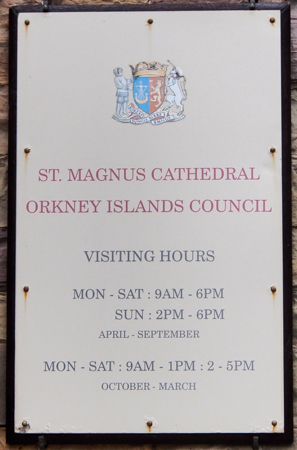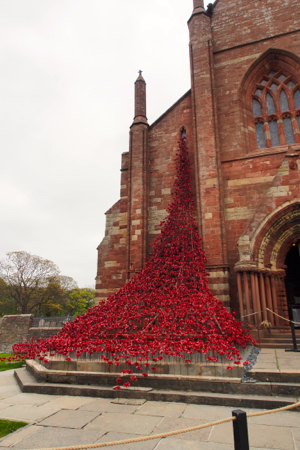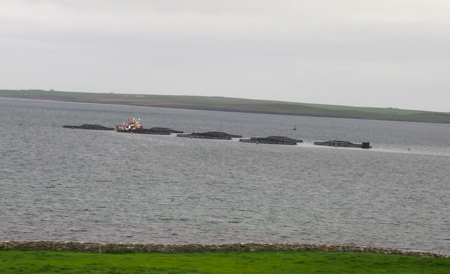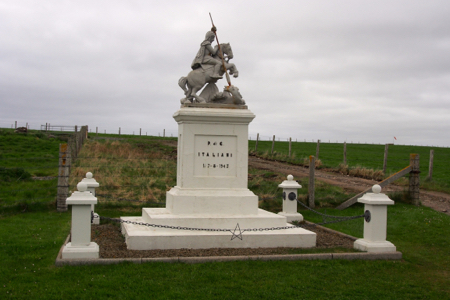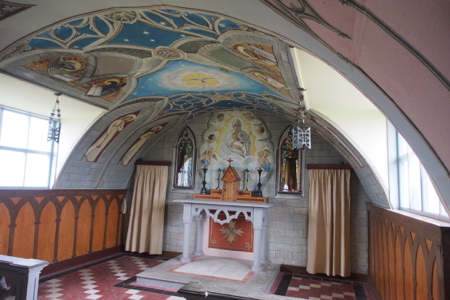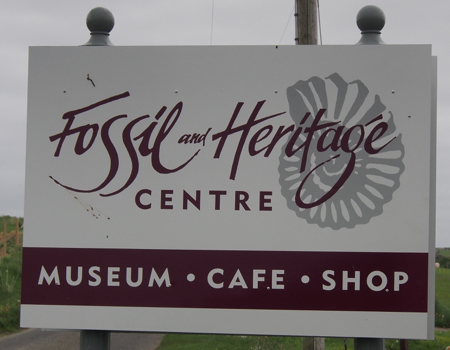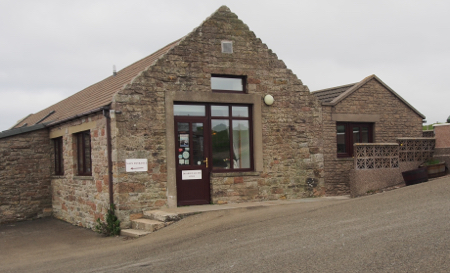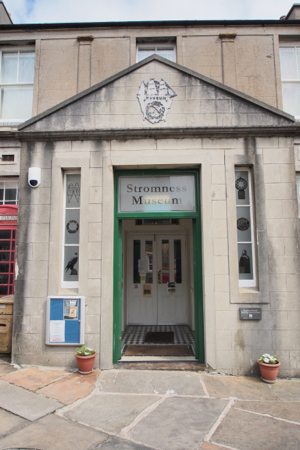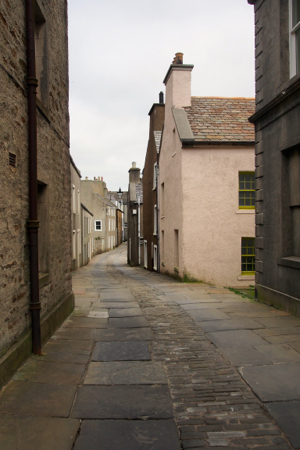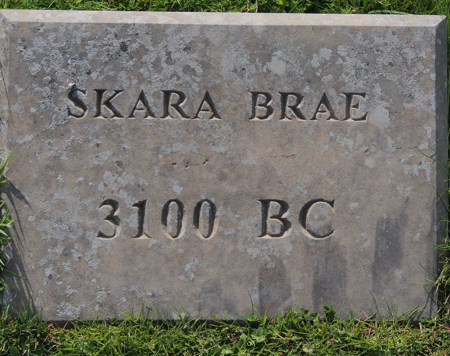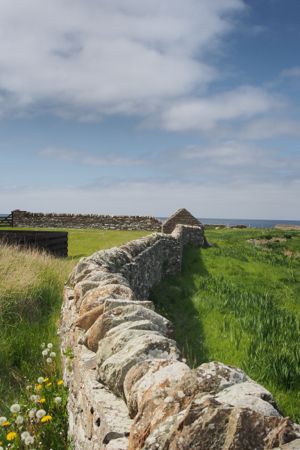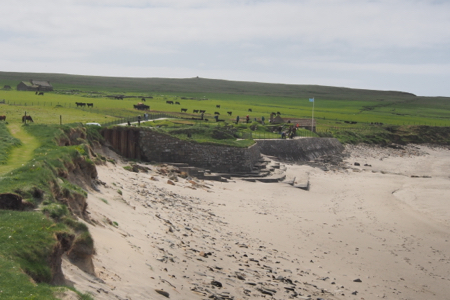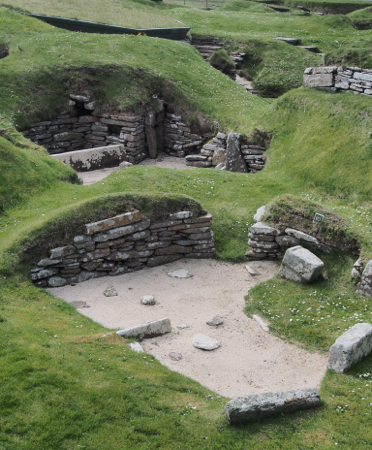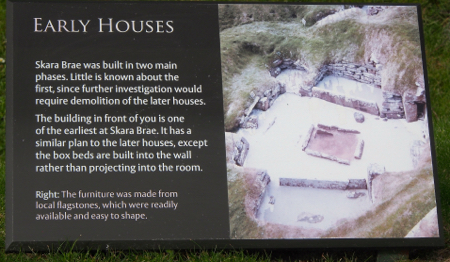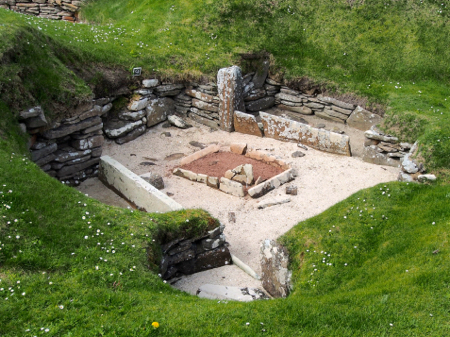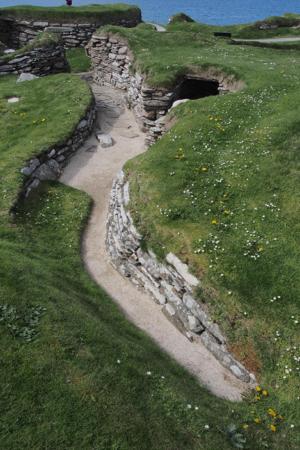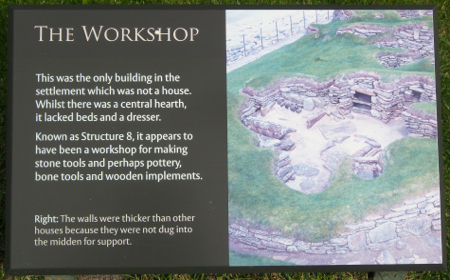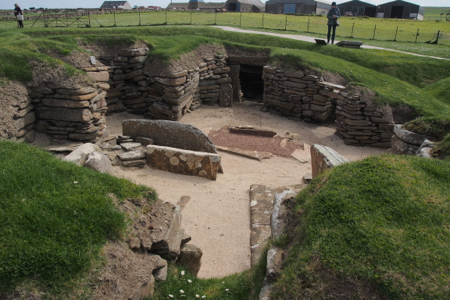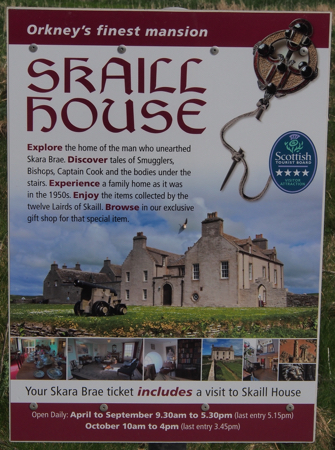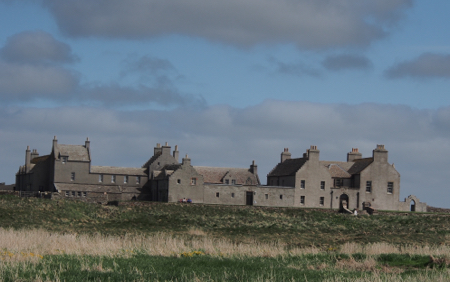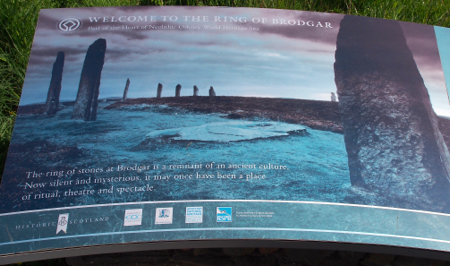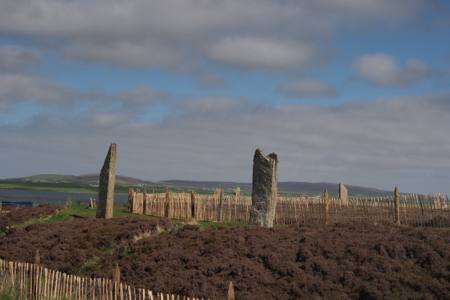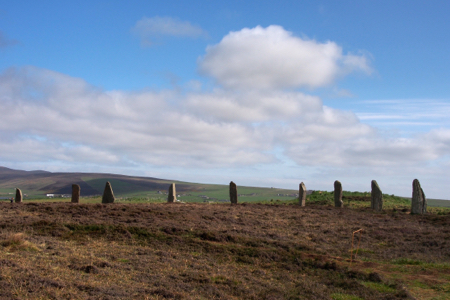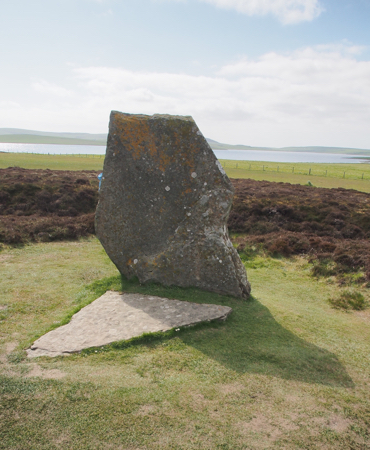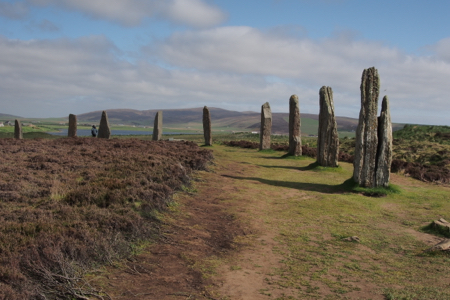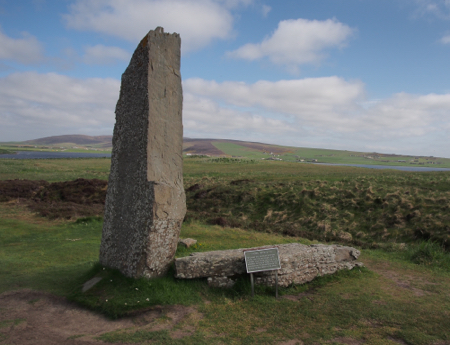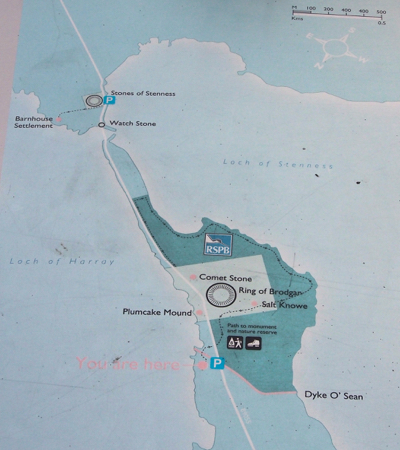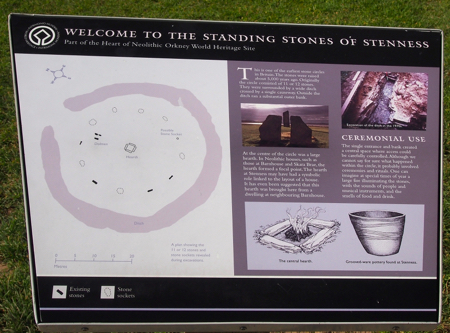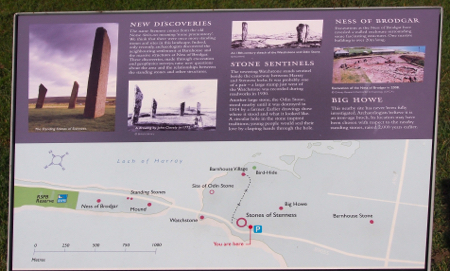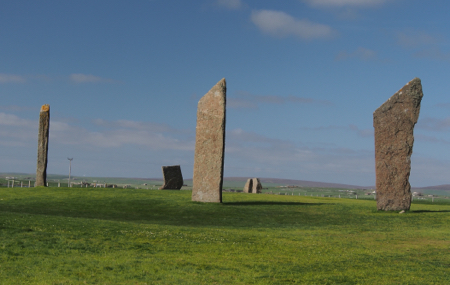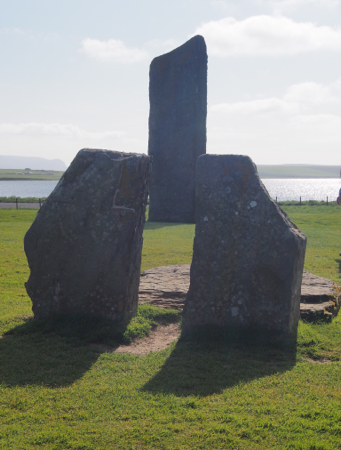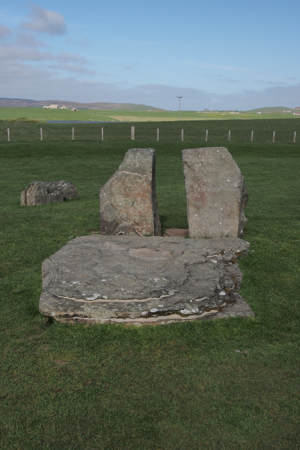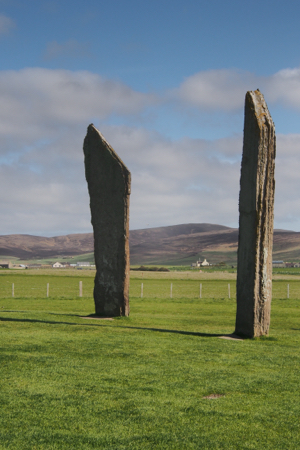Thurs., 5/26/16 – Stromness, Scotland and Skara Brae,
Stromness is a town on one of the approximately 21 inhabited islands of the Orkney Island group of Scotland. It is on the 59th parallel (latitude) and is closer to Bergen, Norway than to London, hence it has a history of Viking raids. The standing stones dotting the islands are actually older than Stonehenge.
We went from the ship in Stromness through Kirkwall on our way to Scapa Flow. The church in Kirkwall had the temporary (it travels among several cities and happens to be here now) “Weeping Window” monument. It consists of 888,246 ceramic poppies that flow out of a church window. Each poppy represents one British or Colonial serviceman killed in WWI. (Link 2)
Weeping Window
Weeping Window
Scapa Flow is a natural bay used by the British navy in both wars. In 1939 a German U-boat was able to come into the bay through a narrow unprotected inlet from the east and torpedo and sink the HMS Royal Oak. Churchill was so angry that this could happen that he ordered four barriers to be constructed to close the unprotected inlets. Some of that work was done by the 600 Italian soldiers in the POW camp at Scapa Flow.
While at the site, the Italians converted a Quonset hut into a Catholic Church for their use. The inside was painted to look like a pattern of bricks. The altar was manufactured from things lying around the camp. The iron looking fence at the altar was made from fuel cans and the “chandeliers” were made from Spam cans. After the war, the head Italian architect came back to restore the church and complete the facade.
Fish farms in Scapa Flow
Monument at the former Italian POW camp
Italian Chapel at the former Italian POW camp
Italian Chapel at the former Italian POW camp
Our next stop was at the Fossil Museum. The staff served us coffee or tea with shortbread cookies and Bere Bannock. Both are traditional Scotch tea-time favorites.
Fossil Museum
In Stromness we briefly entered the local museum with a hodgepodge off WWI & II things and natural history. We walked through town and back to the ship for lunch.
Stromness town museum
Stromness - street scene
After lunch we toured Skara Brae. Skara Brae is the ruins of a Neolithic village built around 3100 BCE. People lived in these stone structures for 600 years. A storm in 1850 blew away the sand that had buried the village. The foundations and neatly stacked stonewalls are now exposed but no one knows what the roofs were made of. This site is very interesting. We also walked through the Skaill House, which was built around 1620. It was a private house and now is owned and opened by the Scottish Heritage. (Link 2)
Stone wall at Skara Brae
Site of Skara Brae
Skara Brae ruins
Skara Brae ruins
Skara Brae ruins
Skara Brae ruins
Skara Brae ruins
Skara Brae ruins
Skaill House
Our next stop was at the Ring of Brodgar. There were once 60 standing stones in a circle, but only 27 remain. As with other rings of vertical stones this one was surrounded by a ditch. It is estimated to be 4,000 to 4,500 years old and there are only questions about its function. (Link 2)
Ring of Brodgar
Ring of Brodgar
Ring of Brodgar
Ring of Brodgar
Ring of Brodgar
Ring of Brodgar
Ring of Brodgar and Stones of Stenness map
Very close to the Ring of Brodgar are the Standing Stones of Stenness. Also a Neolithic monument, this may be the oldest henge site in the British Isles (Link 2). For whatever reason, I find an endless fascination with all of these ancient stone monuments. How wonderful it would be to be able to finally understand why they were erected and what was their true purpose. It is really amazing how many of these sites there are in the British Isles. Because of its publicity, we tend to think that Stonehenge stands alone, but it is really only one of hundreds of sites. We visited quite a few, as you shall see.
Standing Stones of Stenness
Standing Stones of Stenness
Standing Stones of Stenness
Standing Stones of Stenness
| Return to Top | Return to Itinerary | Return to Trips page to view other trips | Return to Dreamcatcher Home Page |
